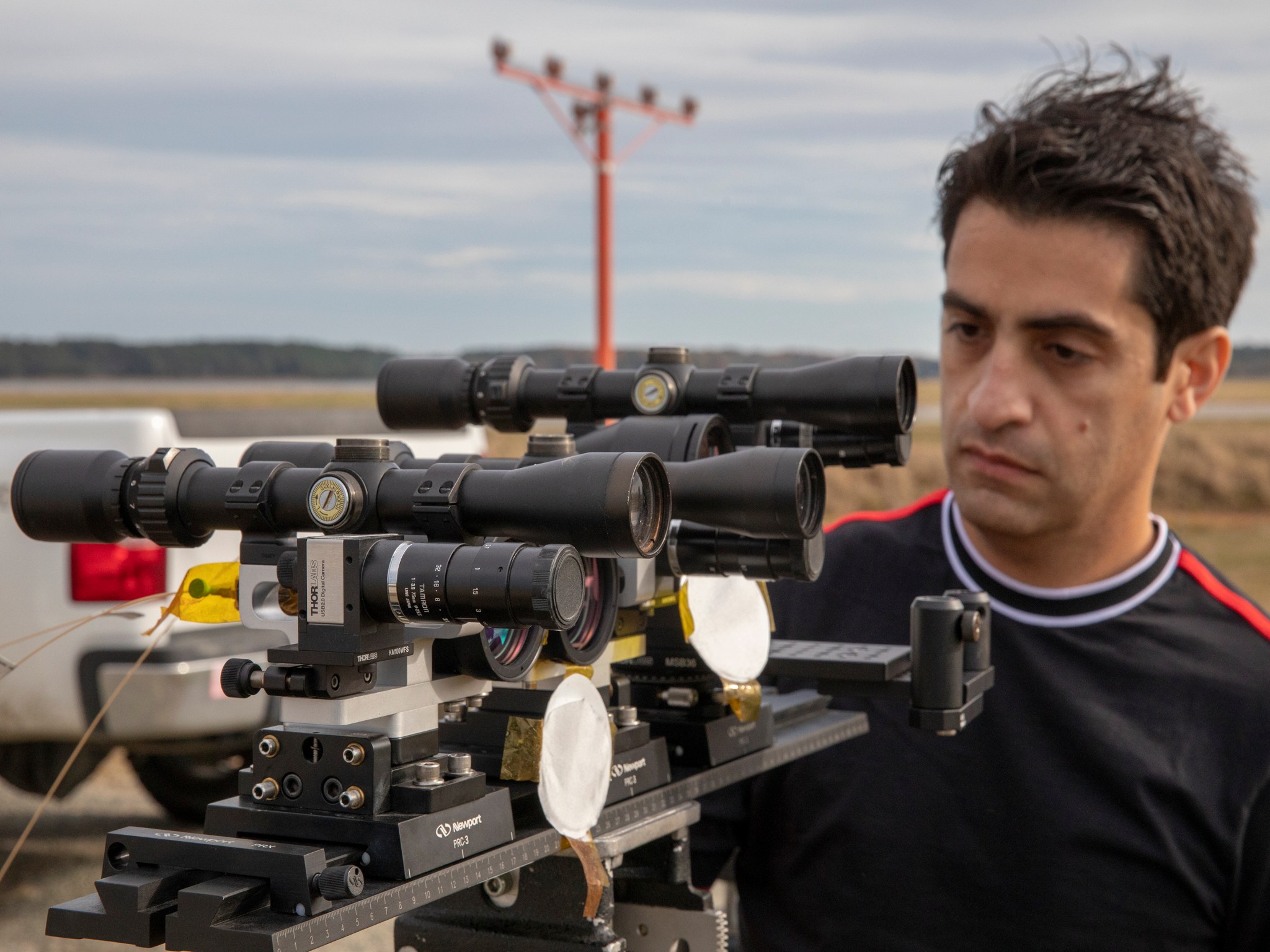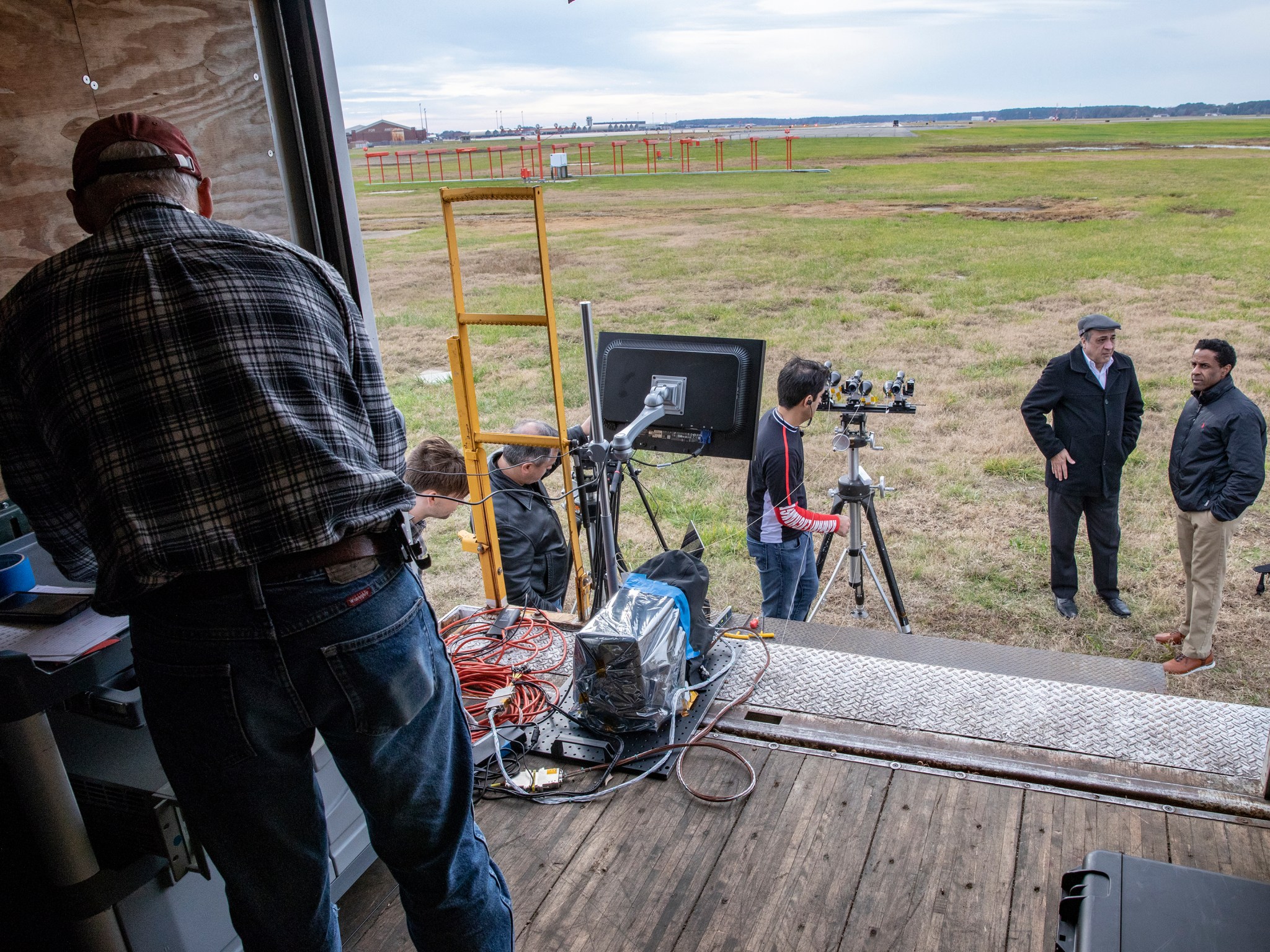GPS is used every day to navigate on Earth. As NASA prepares to land humans on the Moon by 2024, new laser-based technology will safely and precisely navigate astronauts to their destination.
Navigation Doppler Lidar (NDL), being developed at NASA’s Langley Research Center in Hampton, Virginia, will determine a spacecraft’s exact velocity and position to land at the desired location on planetary surfaces. The technology uses lidar (light detection and ranging), which is a remote sensing method using light.
The NDL unit is comprised of a small electronics box connected by fiber optic cables to three telescopes that transmit a laser beam. The lasers are sent down towards the surface, and the reflection received back at the telescope is processed to determine what direction the spacecraft is moving, how far away the surface is, and how fast the vehicle is moving towards the surface.
An NDL engineering test unit – built to mimic the actual hardware that will be used in space – was recently tested on the runway at Langley Air Force Base. During the test, the NDL telescopes were set up approximately a quarter-mile outside of the 1.9-mile runway. The performance of the lidar system was tested by shooting the laser at a target in the back of a truck moving 5-10 mph down the runway.
“This test was very important because we measured the signal intensity over an extended range of 2.4 miles, which is close to the NDL full operational range of three miles on Earth. This test verified that we will have a maximum range of about five miles on the Moon after subtracting atmospheric effects,” said Farzin Amzajerdian, NDL principal investigator at Langley.
Compared to the conventional method of radar used for landing spacecraft, lidar operates at three to four orders of magnitude higher frequency.
“This enables much higher precision velocity and altitude measurements in a package that is at least 50 percent smaller in mass, size and required power than typical current radars,” said Glenn Hines, NDL chief engineer.
Although this NDL is a test unit, Langley will build two space-ready instruments that will fly to the Moon in the coming years.
NDL is a part of the Safe & Precise Landing – Integrated Capabilities Evolution (SPLICE) project, led by NASA’s Johnson Space Center, which is developing, demonstrating and infusing precision landing and hazard avoidance technologies for NASA and for potential commercial spaceflight missions to the Moon, Mars and other planets.































